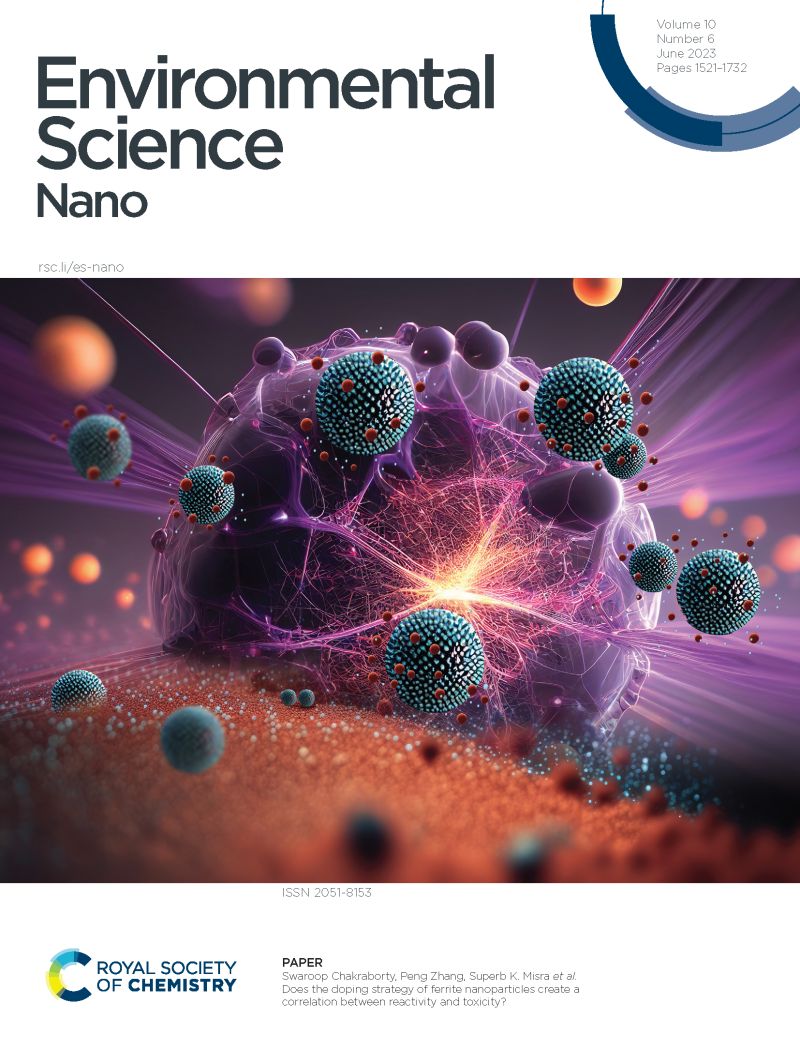Goethite nanoparticles binding DNA in dissemination of antibiotic resistance genes: New insights into the role of inorganic phosphate under environmentally relevant concentrations
IF 5.1
2区 环境科学与生态学
Q1 CHEMISTRY, MULTIDISCIPLINARY
引用次数: 0
Abstract
Iron (oxyhydr)oxides (FeO) significantly influence the environmental dissemination of antibiotic resistance genes (ARGs) by adsorbing ARG-carrying DNA through phosphate interactions. However, the fate of FeO-adsorbed DNA, particularly its release dynamics and impact on ARG dissemination in the presence of inorganic phosphate with environmentally relevant concentrations (Pie), remains unclear. Using goethite (a representative FeO mineral) and diverse DNA forms (three linear fragments, one ARG-carrying plasmid), this study quantified Pie-driven DNA desorption via a novel successive desorption-extraction protocol, distinguishing readily desorbable from residual DNA. Pie (1.0–10 mg-P/L) displaced 5%–96% of adsorbed DNA. Structurally, shorter linear DNA and supercoiled plasmid formed fewer Fe-O-P bonds per adsorbed molecule, enhancing Pie-driven displacement and subsequently increasing their desorbable fraction, yielding a two-stage response to Pie fluctuations (minimal below 0.2–0.5 mg P/L; substantial above). Critically, Escherichia coli transformation assays showed that while goethite adsorption suppressed ARG transfer, Pie-activated desorption restored transformation efficiency. These results resolve the unverified link between realistic Pie fluctuations (e.g., paddy field fertilization/sediment hydrology) and FeO-bound DNA release, demonstrating its potential role in ARG dissemination. This mechanistic insight is essential for risk assessment of ARG transmission in iron-rich ecosystems and strategic deployment of FeO materials for soil ARG mitigation.针铁矿纳米颗粒结合DNA在抗生素耐药基因的传播:无机磷酸盐在环境相关浓度下的作用的新见解
铁(氧)氧化物(FeO)通过磷酸盐相互作用吸附携带ARGs的DNA,显著影响抗生素耐药基因(ARGs)的环境传播。然而,feo吸附DNA的命运,特别是在环境相关浓度(Pie)的无机磷酸盐存在下,其释放动力学和对ARG传播的影响仍不清楚。利用针铁矿(一种代表性的FeO矿物)和不同的DNA形式(三个线性片段,一个携带arg的质粒),本研究通过一种新的连续脱附-萃取方案定量了饼驱动的DNA脱附,区分了容易脱附的DNA和残余DNA。Pie (1.0-10 mg-P/L)置换了5%-96%的吸附DNA。在结构上,较短的线性DNA和超卷曲质粒在每个吸附分子上形成较少的Fe-O-P键,增强了Pie驱动的位移,随后增加了它们的可脱吸部分,产生了对Pie波动的两阶段响应(最小低于0.2-0.5 mg P/L;大量高于)。关键是,大肠杆菌转化实验表明,针铁矿吸附抑制ARG转移,而馅饼活化解吸恢复转化效率。这些结果解决了实际Pie波动(例如水田施肥/沉积物水文)与feo结合的DNA释放之间未经证实的联系,证明了其在ARG传播中的潜在作用。这种机制对于富铁生态系统中ARG传播的风险评估和FeO材料在土壤ARG缓解中的战略部署至关重要。
本文章由计算机程序翻译,如有差异,请以英文原文为准。
求助全文
约1分钟内获得全文
求助全文
来源期刊

Environmental Science: Nano
CHEMISTRY, MULTIDISCIPLINARY-ENVIRONMENTAL SCIENCES
CiteScore
12.20
自引率
5.50%
发文量
290
审稿时长
2.1 months
期刊介绍:
Environmental Science: Nano serves as a comprehensive and high-impact peer-reviewed source of information on the design and demonstration of engineered nanomaterials for environment-based applications. It also covers the interactions between engineered, natural, and incidental nanomaterials with biological and environmental systems. This scope includes, but is not limited to, the following topic areas:
Novel nanomaterial-based applications for water, air, soil, food, and energy sustainability
Nanomaterial interactions with biological systems and nanotoxicology
Environmental fate, reactivity, and transformations of nanoscale materials
Nanoscale processes in the environment
Sustainable nanotechnology including rational nanomaterial design, life cycle assessment, risk/benefit analysis
 求助内容:
求助内容: 应助结果提醒方式:
应助结果提醒方式:


